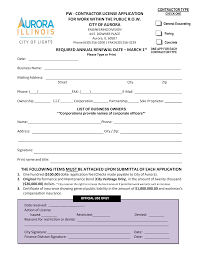
The meter keeps track of how much electricity is used in your household to provide electricity supply. The electricity then flows through wires and switches throughout your house. These wires are the source of the electricity that powers your appliances. Two hundred to three hundred outlets are found in the average house.
Distributed power
Distributed power refers to the power that is used to supply power to homes and buildings. This type of power can be generated and distributed with different technologies. The primary distribution current is generally between four and 35kV (phase-to–phase) or 20kV (phase-to neutral). Most utility customers are connected to a transformer that lowers this voltage to lower levels for lighting and interior wiring systems. There are two types of distribution networks, radial and network. Network distribution systems have multiple sources of supply operating in parallel. Spot networks are used to transport concentrated loads. Radial distribution is used in rural areas.

Transmission lines
Transmission lines are the route through which electricity flows from your power house to your home. A typical transmission line has three phases with their own conductors. Each phase of electricity travels along a conductor wire, which is composed of multiple aluminum strands supported by a steel core. These conductors are often bundled together to increase their capacity.
Inverters
Inverters are capable of producing an AC signal. They can be used in many ways. They can produce a square wave, a modified sine wave, or a pulse width modulated wave. They can also be used to create low-pass filters, which allow the fundamental component to pass through but limit the harmonic component. They produce either sine waves or quasi square waves. Inverters can be classified according their frequency response.
Generators
Generators create electricity by using fuel and are an essential component of every electrical power house. Generators can power essential home appliances, such as lights and refrigerators, or they can also be used for camping. There are two main types of generators: the portable generator that is used to power camping equipment and the larger, more permanent standby generators which are placed outside your home. Michael Faraday, who invented the first generator in 1831, has seen technology improve tremendously. There are many different types of generators, and each has its own advantages.
Substations
There are several factors to consider when deciding where to locate substations in an electrical power house. These factors include size, security, and location. A substation can be on the ground or underground, or it can be inside a special building. Urban areas are the most likely to have indoor substations. This reduces the amount of noise from transformers and protects switchgear from the harsh climate.

Electric meter
An electric meter measures the electricity consumed. It measures the electricity consumption in watts, kilowatts hours. A watt is the product of a circuit's voltage and amperage. One volt x 1 amp is the formula to determine a watt. To accurately measure the amount of energy used, however, we must also consider the element time. A watt is the unit used to calculate how much electricity a home or business uses.
FAQ
Do I need to sign anything before I start work?
Yes - your SCA requires both parties to sign it. This means that neither party can alter their minds later without the consent of the other.
Is there an upper limit on how much I can spend?
No. No. However, you may be able to negotiate a lower price with the contractor.
Is a Service Contract a Warranty?
Service contracts are not warranties. It is an agreement between 2 parties to exchange goods. If the product does not work as promised, the customer agrees pay for repair or replacement. This type of contract is also known as a maintenance contract.
Statistics
- While we offer all our high-quality services at competitive prices, we know that many who need our services are on fixed incomes, so we offer a 10 percent discount for seniors and military members. (homeservicecontractorsinc.com)
- Don't take their anger personally, they are mad about the situation 99% of the time. (activatemylicense.com)
- (1) Ascertain the extent to that offers are based on the payment of overtime and shift premiums; and (2) Negotiate contract prices or estimated costs without these premiums or obtain the requirement from other sources. (acquisition.gov)
- Reasonable late fees go up to 25% per year on unpaid sums. (lawdepot.com)
- (ii) Name, address, and telephone number of each proposed first-tier subcontractor with a proposed subcontract estimated at $10 million or more. (acquisition.gov)
External Links
How To
How do you write a good service agreement?
When writing a good service agreement, remember that you are trying to satisfy two requirements.
First, you must satisfy the requirements of the customer.
Second, you must satisfy the legal requirements of the seller.
This is why you should ensure that your service agreement covers the following.
-
Identify the parties.
-
Define what the agreement is about.
-
Specify the term of your agreement.
-
Determine whether you give any warranties.
-
Define the obligations and liabilities for both parties.
-
Establish the mode of payment.
-
Clearly explain how disputes will be resolved.
-
Provide details about any special instructions or limitations.
-
Sign the contract by both parties.
-
Include a clause that states that the agreement was read and understood prior to signing.
-
Be sure to have a printed copy of the agreement.
-
Before you send your service agreement to the buyer, ensure that you carefully review it.
-
You should immediately contact your supplier if you notice any problems with the agreement.
-
Send off the revised version once everything is corrected.
-
Do not sign the agreement until you have received confirmation from the buyer that they have accepted the changes made.
-
Keep a copy of the original agreement and the finalized one.
-
Make sure you are aware that service providers in certain countries have legal responsibility for ensuring their customers receive high quality services.
-
In case of dispute, keep a record of all correspondence between yourselves and the customer.
-
Get professional help when drafting a service agreement.
-
After agreeing to the terms, the buyer can request a modification to the contract terms.
-
Always confirm that you have read and understood the change request before you accept it.
-
Never accept a request for a change without first checking.
-
If you don't agree to the change, inform the customer.
-
If you still do not agree, then inform them that the change is unacceptable.
-
If the customer refuses to accept your decision, then refuse to complete the contract.
-
Once you have accepted the decision of the customer, you can then complete the contract.
-
If you have accepted a change to the contract terms, then you must also accept the new conditions.
-
You should ensure that the contract is thoroughly reviewed before you send it off.
-
Also, ensure that the law is followed.
-
Send the contract to your buyer after it is completed.
-
Final note: Keep a copy the contract completed for future reference.
-
Failure to follow even one of these rules could lead to you losing your savings.
-
It does not take long to write up a good service agreement.
-
The more detail you provide, the better.